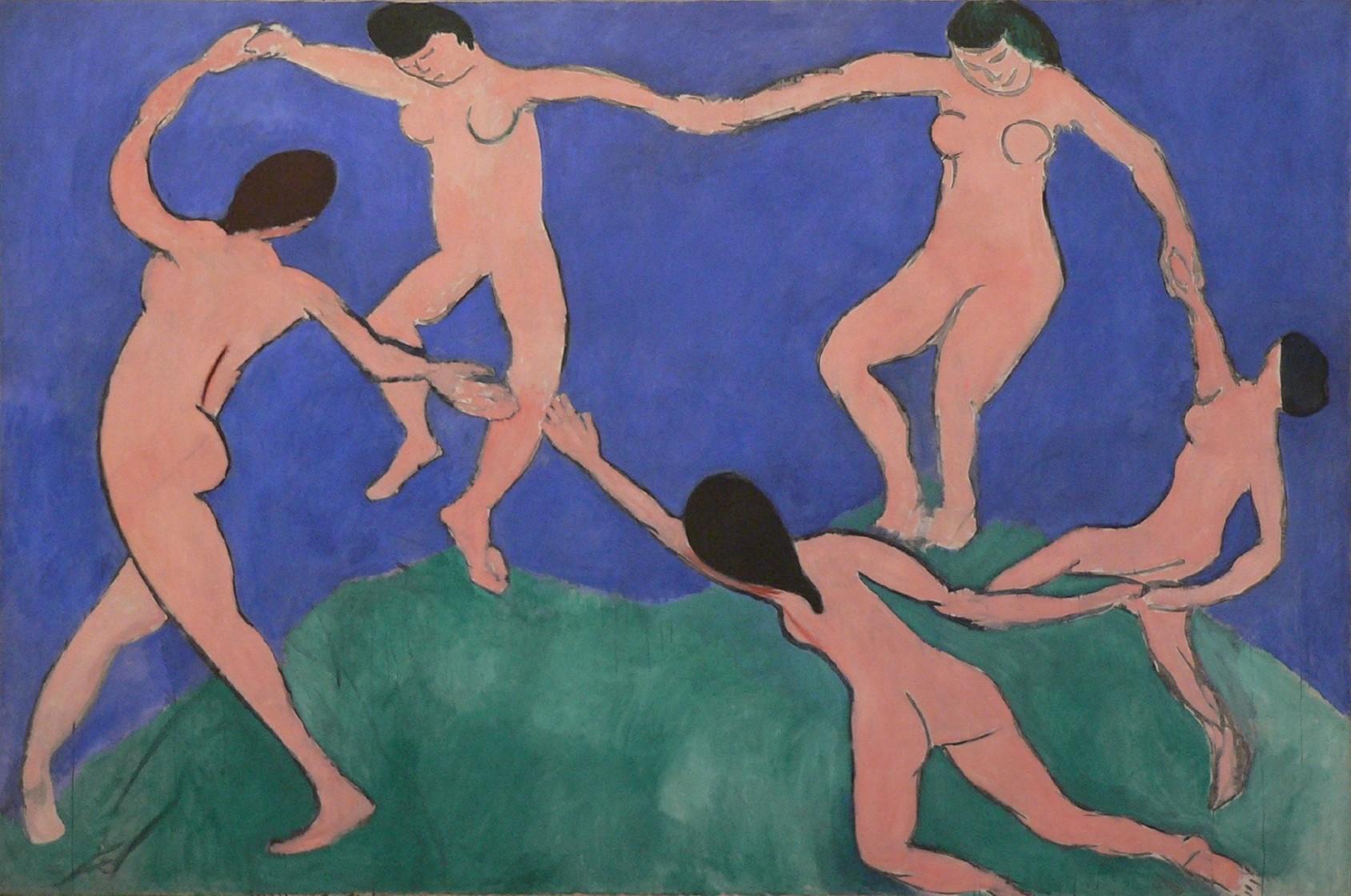
wikimedia commons MoMA
Henri Matisse, The Dance (first version), 1909.
Born on New Year’s Eve in 1869, Henri Matisse became one of the most influential French painters of the 20th century. Not only did his use of bright colors and distorted shapes lead to the rise of Fauvism, but his works served as inspiration for both his contemporaries and the artists who came after him.
Here are 10 surprising facts about the life of Henri Matisse.
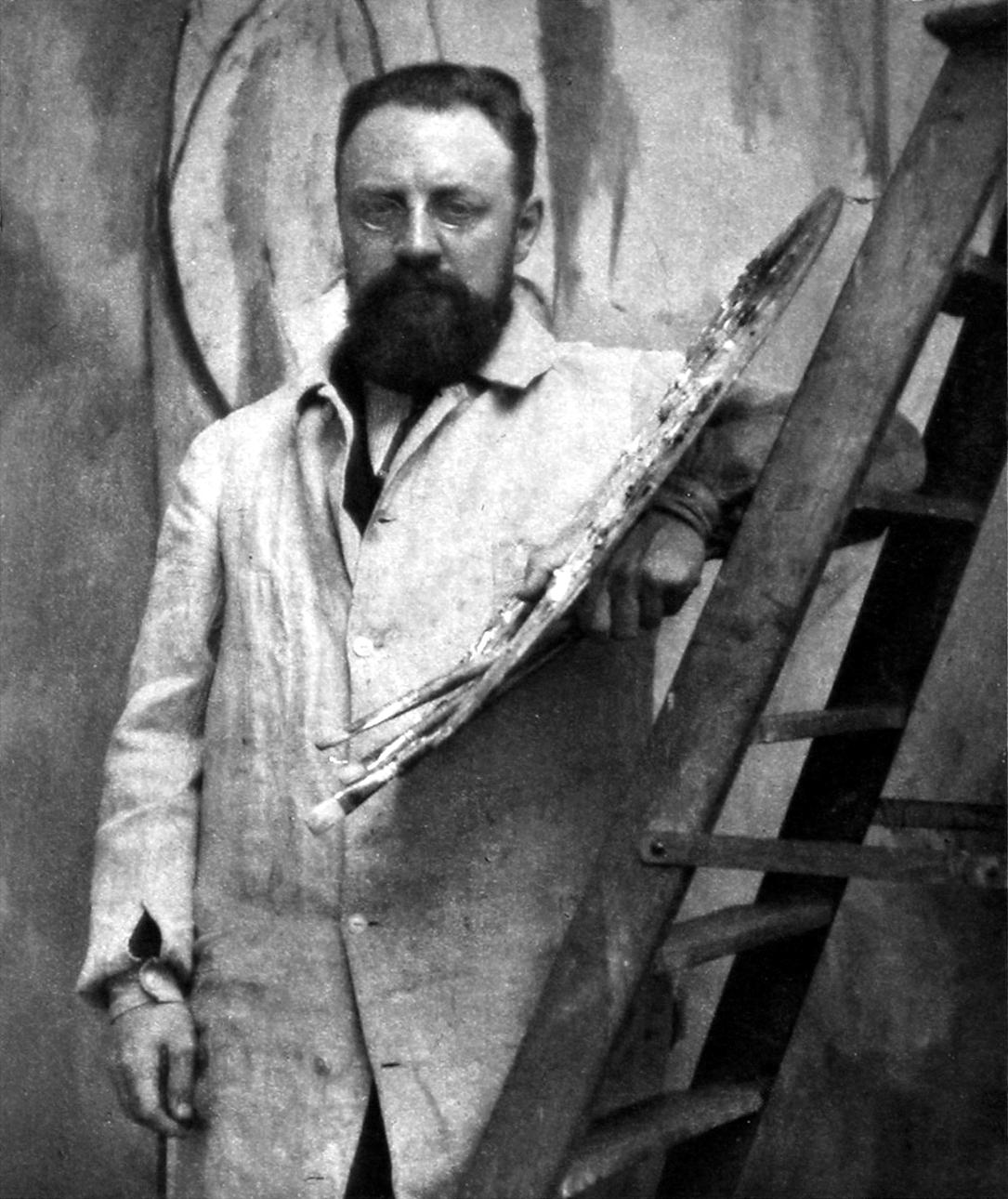
wikimedia commons
Henri Matisse in 1913
1. Matisse Didn’t Plan on Becoming an Artist
Henri Matisse planned to be a lawyer. He attended law school, passed his exams in 1888, and worked as a law clerk until he came down with a severe case of appendicitis in 1889. While he was recovering, his mother gifted him art supplies for entertainment. It was only then that he discovered his passion for art and decided to become an artist.
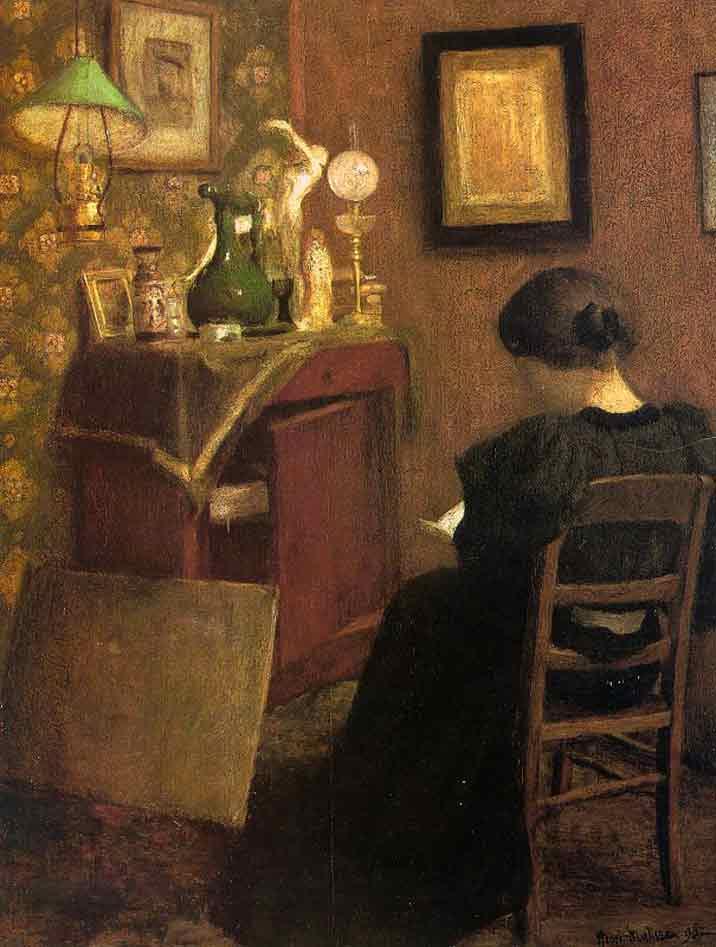
wikimedia commons
Woman Reading (La Liseuse), 1895.
2. He Wasn’t Always an Experimental Painter
Though he is now known as a leading avant-garde painter of the early 20th century, Matisse began his painting career in more traditional styles. In 1891, he studied at the conservative Académie Julian with painter and academic William-Adolphe Bouguereau. Many of his earliest works mimicked techniques of 17th century Dutch painters.
It wasn’t until after Matisse was exposed to Post-Impressionist works, particularly those of Vincent van Gogh, and experimented with them himself that his work embodied the “wild” characteristics that later became known as Fauvism.
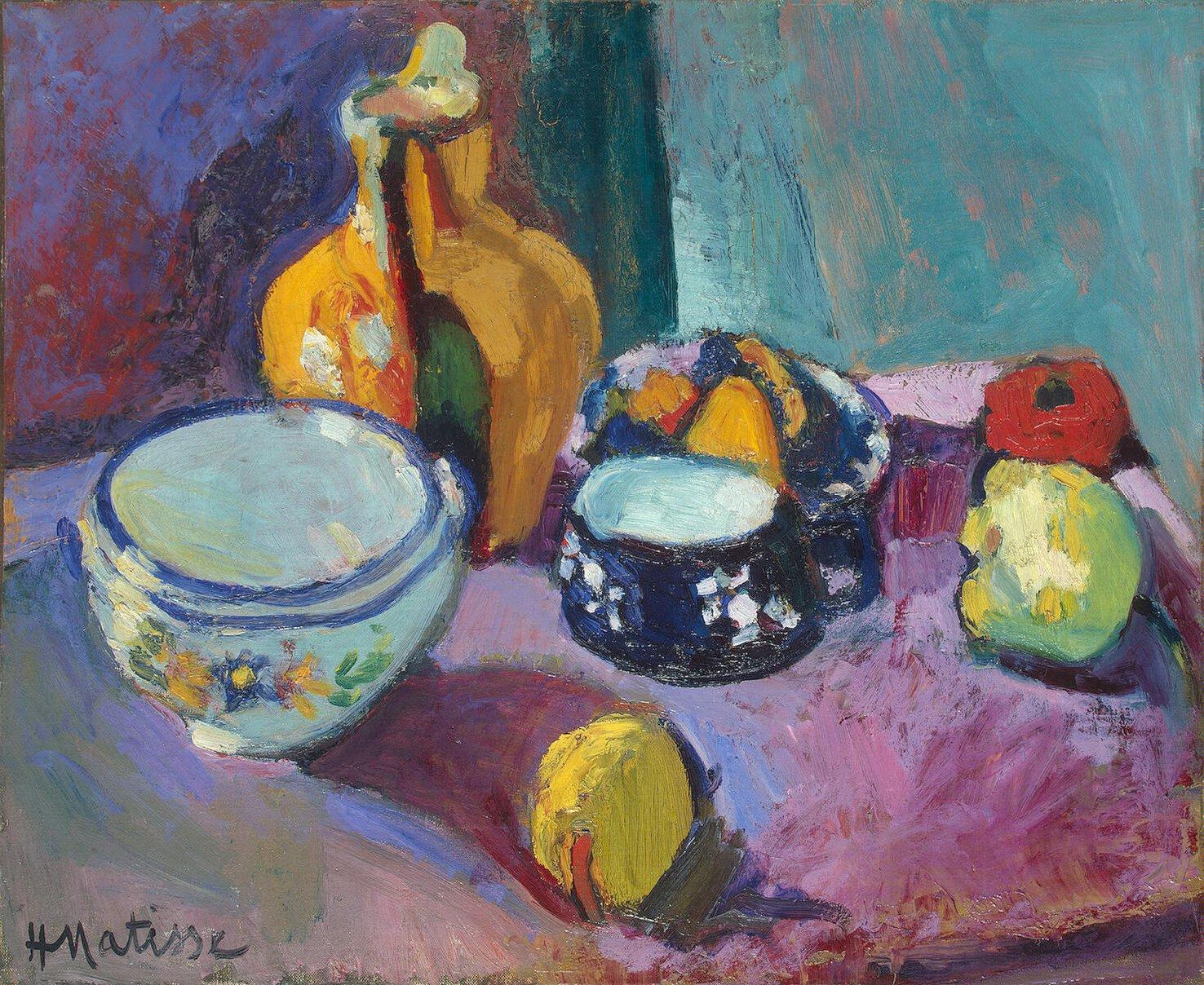
wikimedia commons
Dishes and Fruit, 1901.
3. Matisse Needed Encouragement to Innovate
Matisse viewed his time at the Académie Julian as unsuccessful, so in 1892 he left the school to take night classes at l'École des Arts Décoratifs and began working with the Symbolist Gustave Moreau at l'École des Beaux-Arts. It was Moreau who encouraged Matisse and his classmates to develop their own artistic personalities, leading Matisse to experiment with form and color.
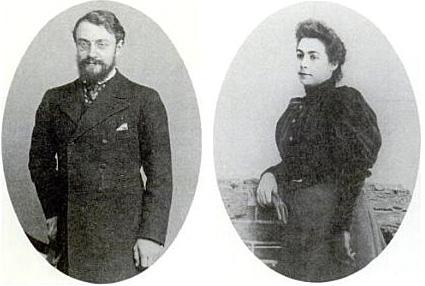
wikimedia commons
Henri Matisse and Amélie Matisse-Parayre, 1898
4. His Colors Were Inspired by His Travels
After marrying Amélie Parayre in 1898, Matisse traveled for a year. In London, he studied the works of the Romantic landscape painter J.M.W. Turner, who was known for his use of light and color to create atmosphere.
He then traveled to Corsica and the Côte d'Azur, where the primary colors he’d been using in an Impressionist style became brighter, inspired by the landscapes he encountered on the Mediterranean coast. Matisse traveled more throughout his life and allowed his experiences to shape his art.
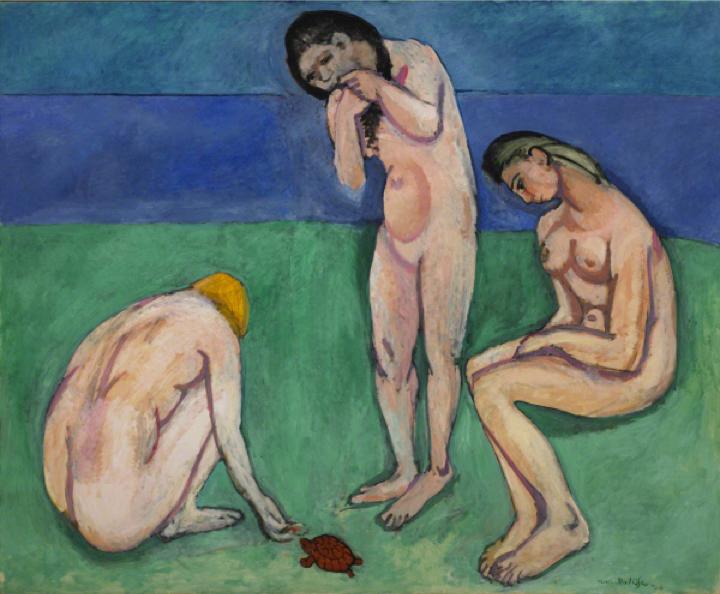
wikimedia commons
Bathers with a Turtle, 1908.
5. He Purchased a Cézanne Painting He Couldn’t Afford
Matisse greatly admired the work of Paul Cézanne. In 1899 Matisse was struggling to meet his financial obligations, yet he used a promissory note to buy Cézanne’s Three Bathers (1879-1882) from dealer Ambroise Vollard, who had organized Cézanne’s first exhibition in Paris.
He was so fascinated by the painting that he created his own Three Bathers paintings in homage to Cézanne’s work in 1907, along with its follow up, Bathers with a Turtle in 1908.
Matisse donated the Cézanne painting to the Petit Palais in 1936.
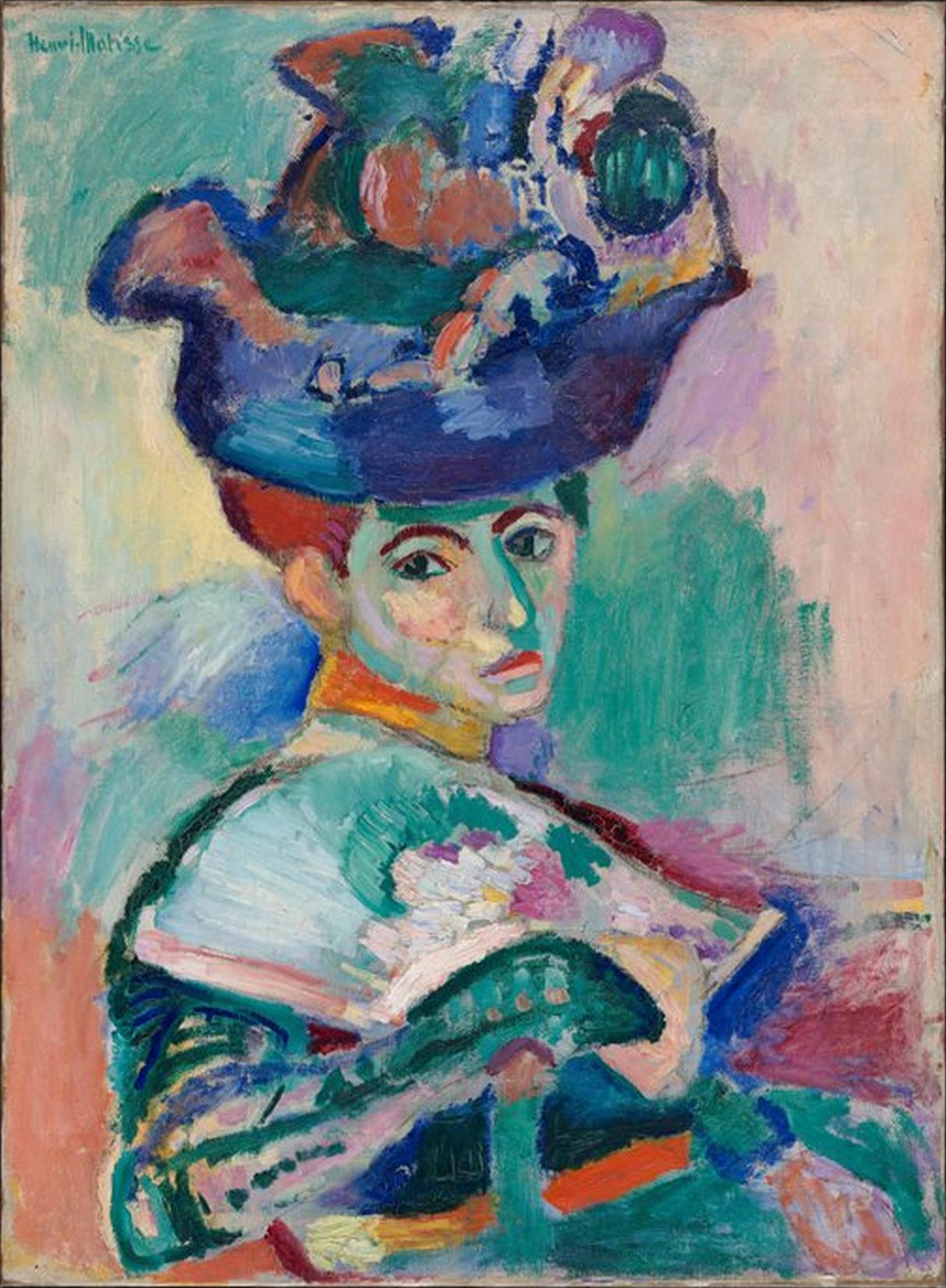
wikimedia commons SFMOMA
Woman with a Hat, 1905.
6. Matisse and Picasso Were Friends—and Rivals
On the surface, it may seem Pablo Picasso and Matisse had a lot in common. Both were inspired by the works of Paul Cézanne, both played with unconventional forms and colors in their work, and both were friends of Gertrude Stein, but the men did not take an immediate liking to one another when Stein introduced them in 1906 in her Paris salon.
After several years of rivalry, Matisse and Picasso did begin to enjoy each other’s company. Matisse later said of Picasso, “We’ve got to see each other often, because when one of us goes, there are things the other will no longer be able to say to anyone.”
Yet the competitive nature of their relationship never diminished. They fiercely debated aesthetics and the merits of commissions and many of their works were painted in response to something they’d seen painted by the other. Matisse famously called their relationship a “boxing match.”
Meanwhile Picasso said of their paintings, “You have got to be able to picture side by side everything Matisse and I were doing at that time. No one has ever looked at Matisse’s painting more carefully than I; and no one has looked at mine more carefully than he.”
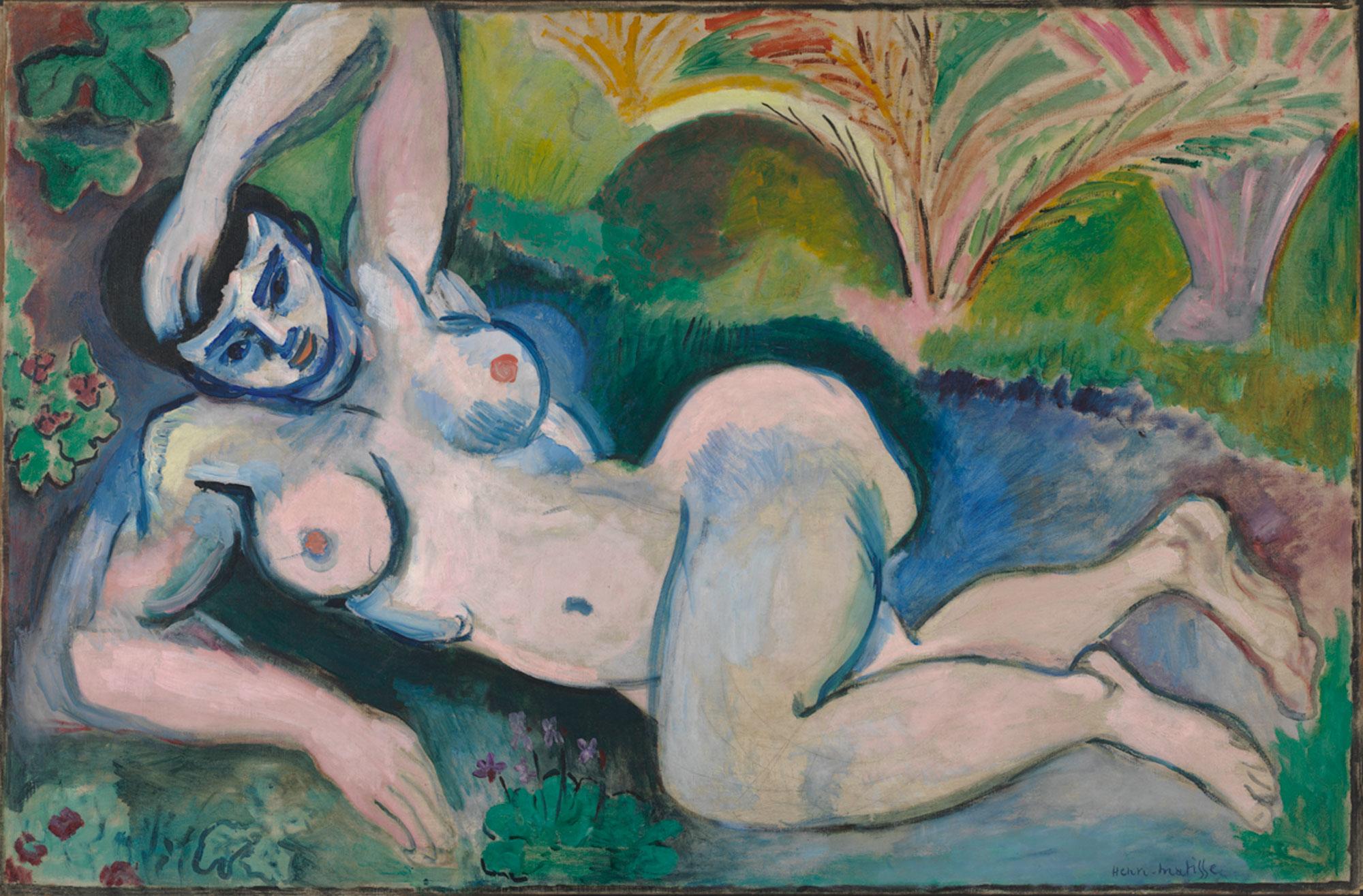
wikimedia commons
Blue Nude, 1907.
7. Matisse’s Blue Nude Was Burned in Effigy Yet Inspired Picasso
Though reclining female nude figures have been prominent in the art world as far back as the Renaissance, Matisse’s 1907 Blue Nude painting features a distorted model rather than a more idealized female image. It was purchased by Gertrude and Leo Stein and traveled in exhibitions across the U.S., where it was harshly criticized, but perhaps nowhere with more vitriol than in Chicago where a copy of it—along with copies of two other Matisse works—were burned in effigy by art students.
Yet despite criticism, it was an inspiration for one of Picasso’s best-known works: Les Demoiselles d’Avignon. It was exhibited when Picasso was working on Demoiselles, and though Picasso criticized it, he then drew on Matisse’s nude as inspiration, along with African masks he’d seen in a museum after Matisse showed him an African statue.
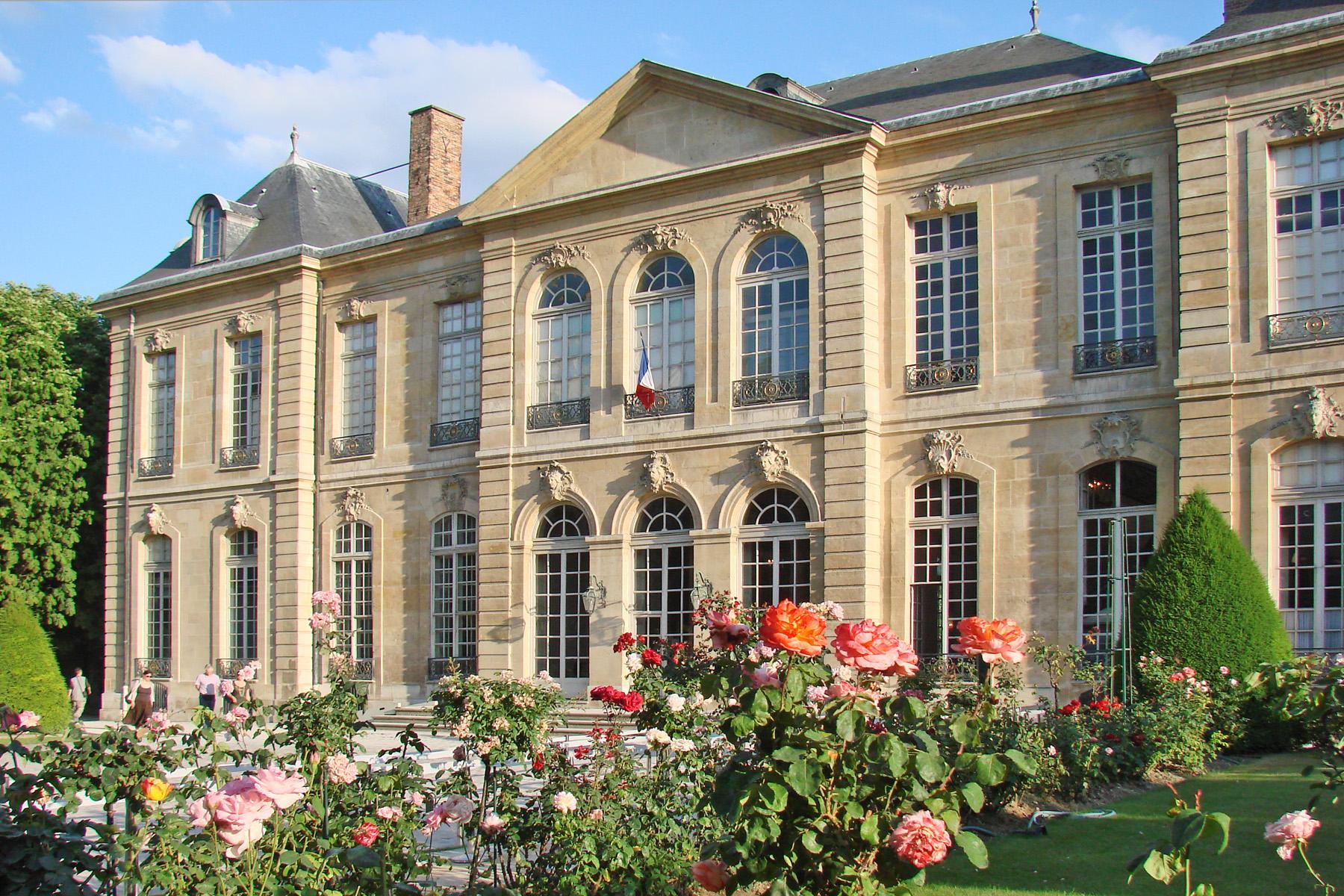
wikimedia commons
Musée Rodin
8. Matisse Lived in the Musée Rodin Before it was a Museum
During the 18th century, the Hôtel Biron, which is now known as the Musée Rodin, was a mansion in Paris, and then it became a boarding school for girls. Rooms were later leased to tenants, many of whom were artists.
Matisse lived and worked there among other prominent writers and artists, including Jean Cocteau, Isadora Duncan, Rainer Maria Rilke, Clara Westhoff, and, of course, Auguste Rodin, who later took over the whole building.
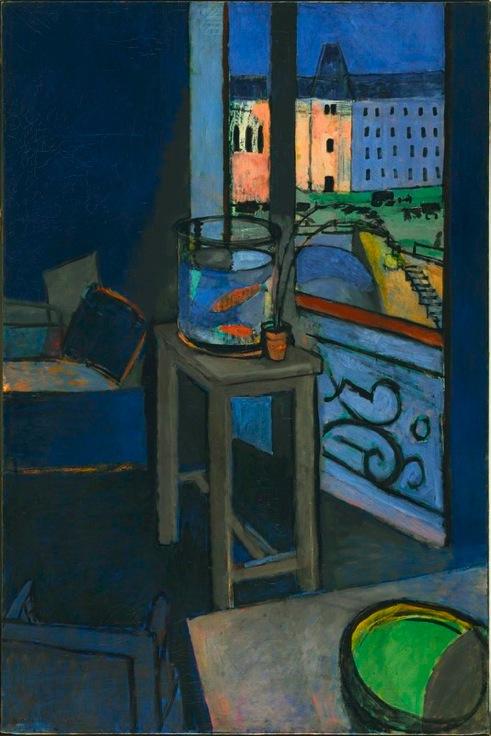
Wikimedia commons Centre Georges Pompidou
Les poissons rouges (Interior with a Goldfish Bowl), 1914.
9. Matisse Was an Animal Lover
Matisse loved nature and animals, and he was devoted to his three feline companions named Cousi, Minouche, and La Puce. He is even said to have fed his cats brioche bread every morning. Matisse, also a lover of birds, had pet doves, which he purchased from vendors along the Seine. Both these animals and others have appeared in his art.
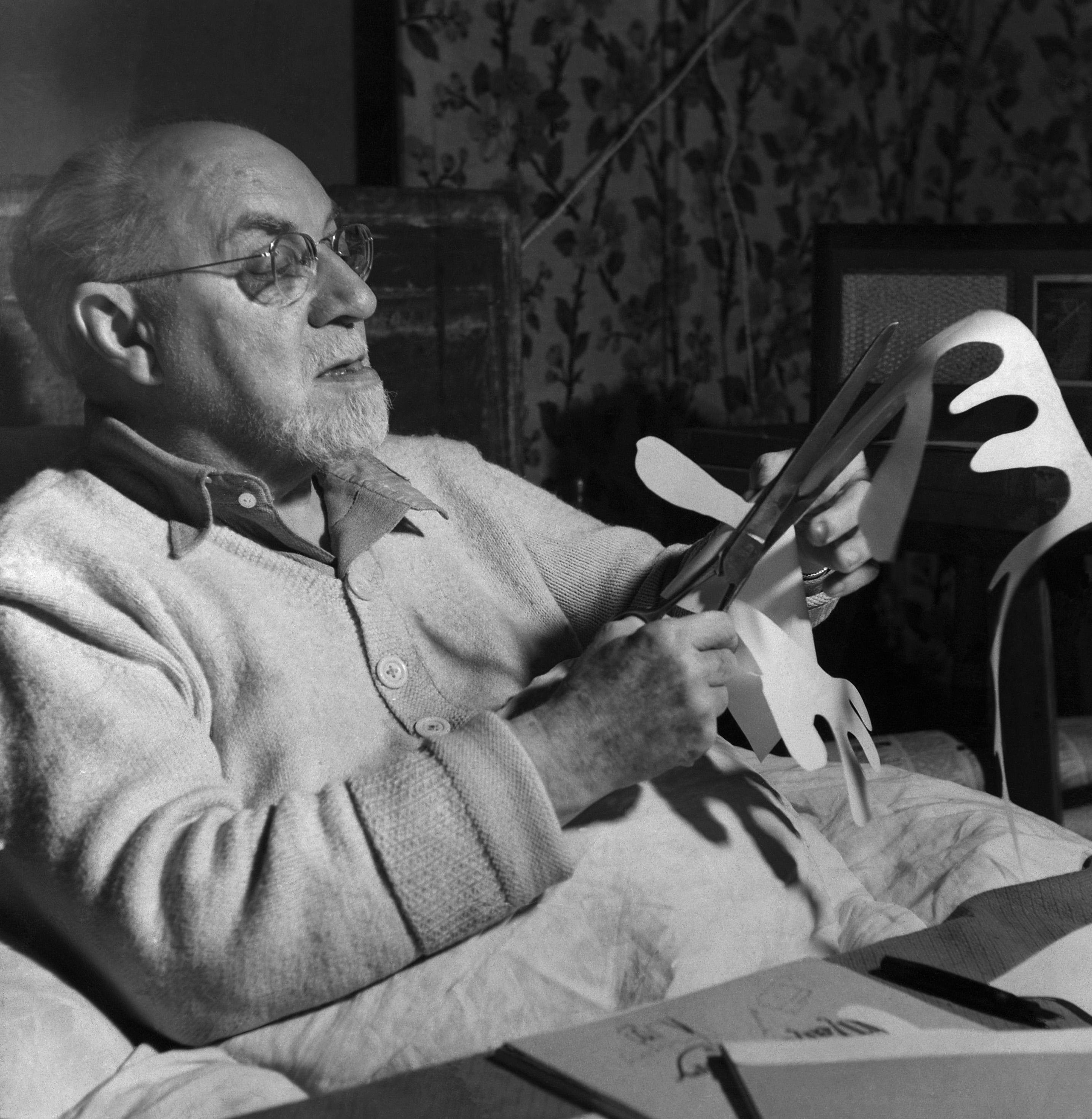
wikimedia commons




























